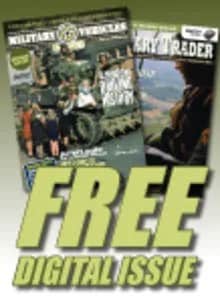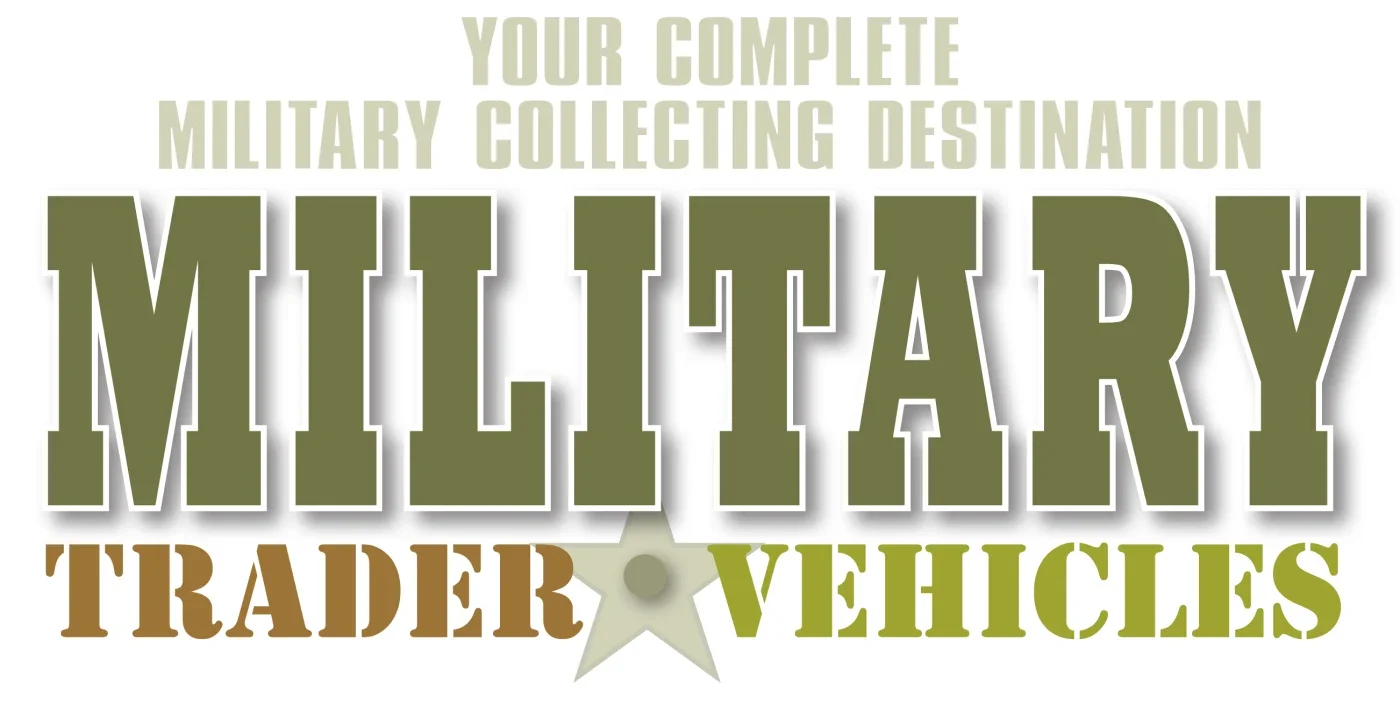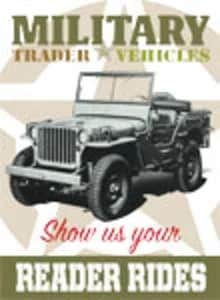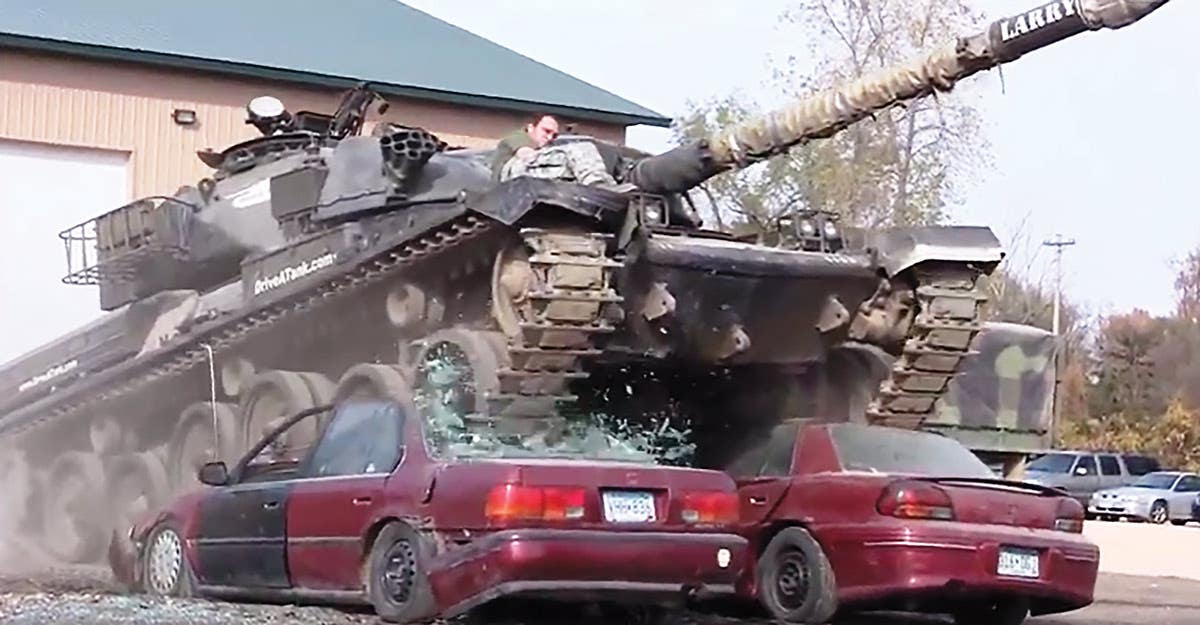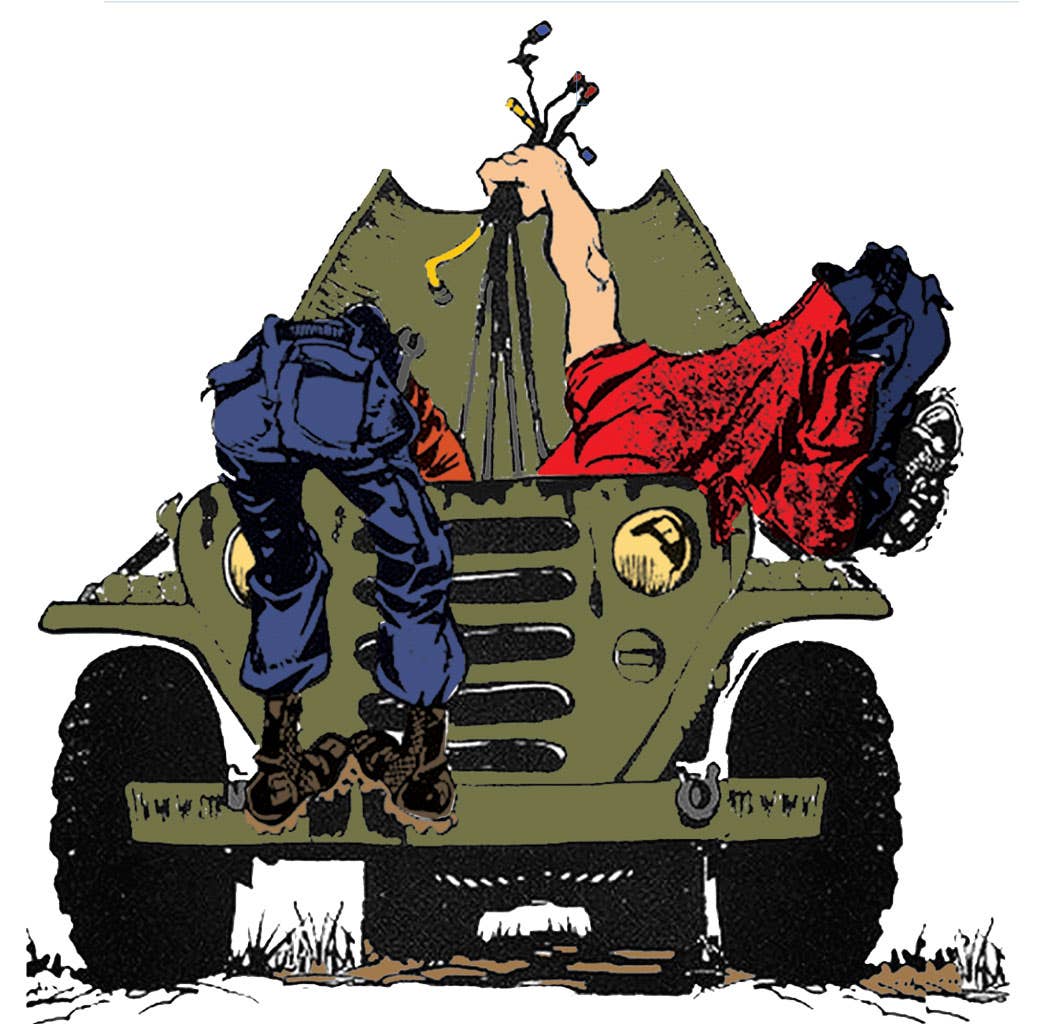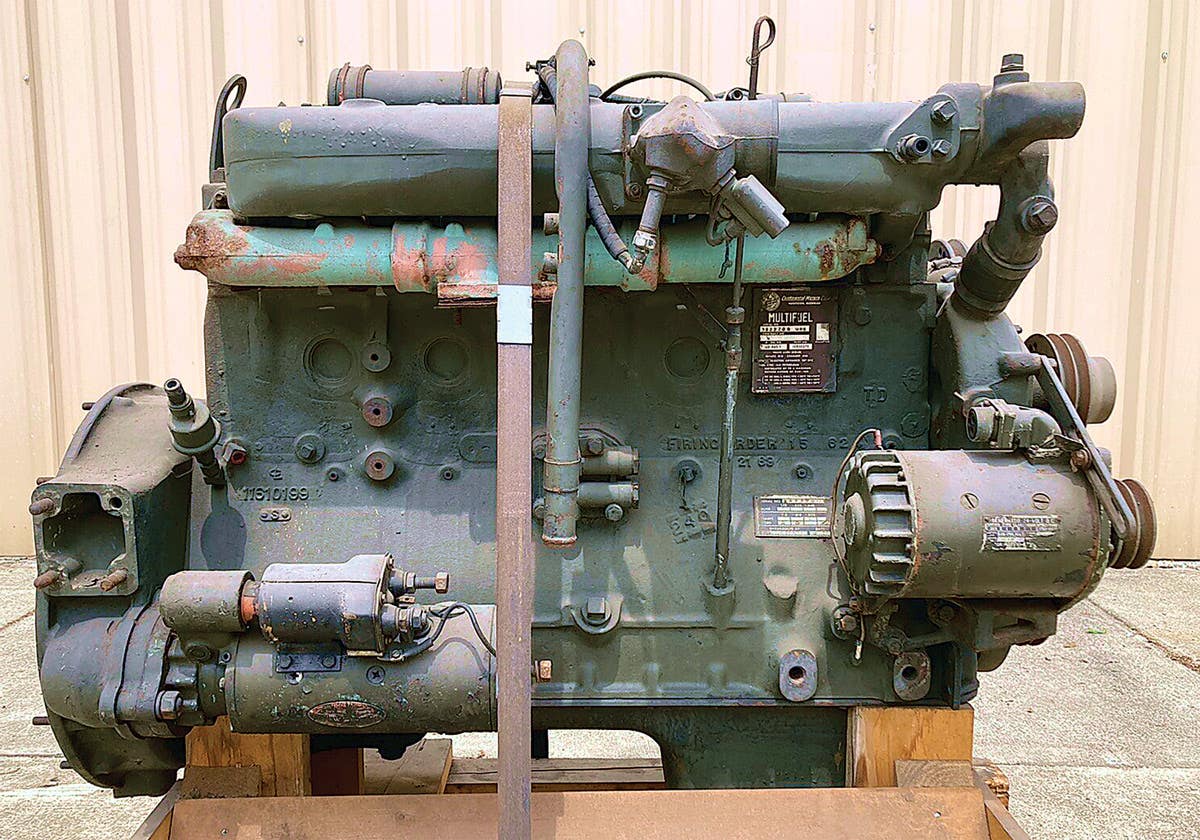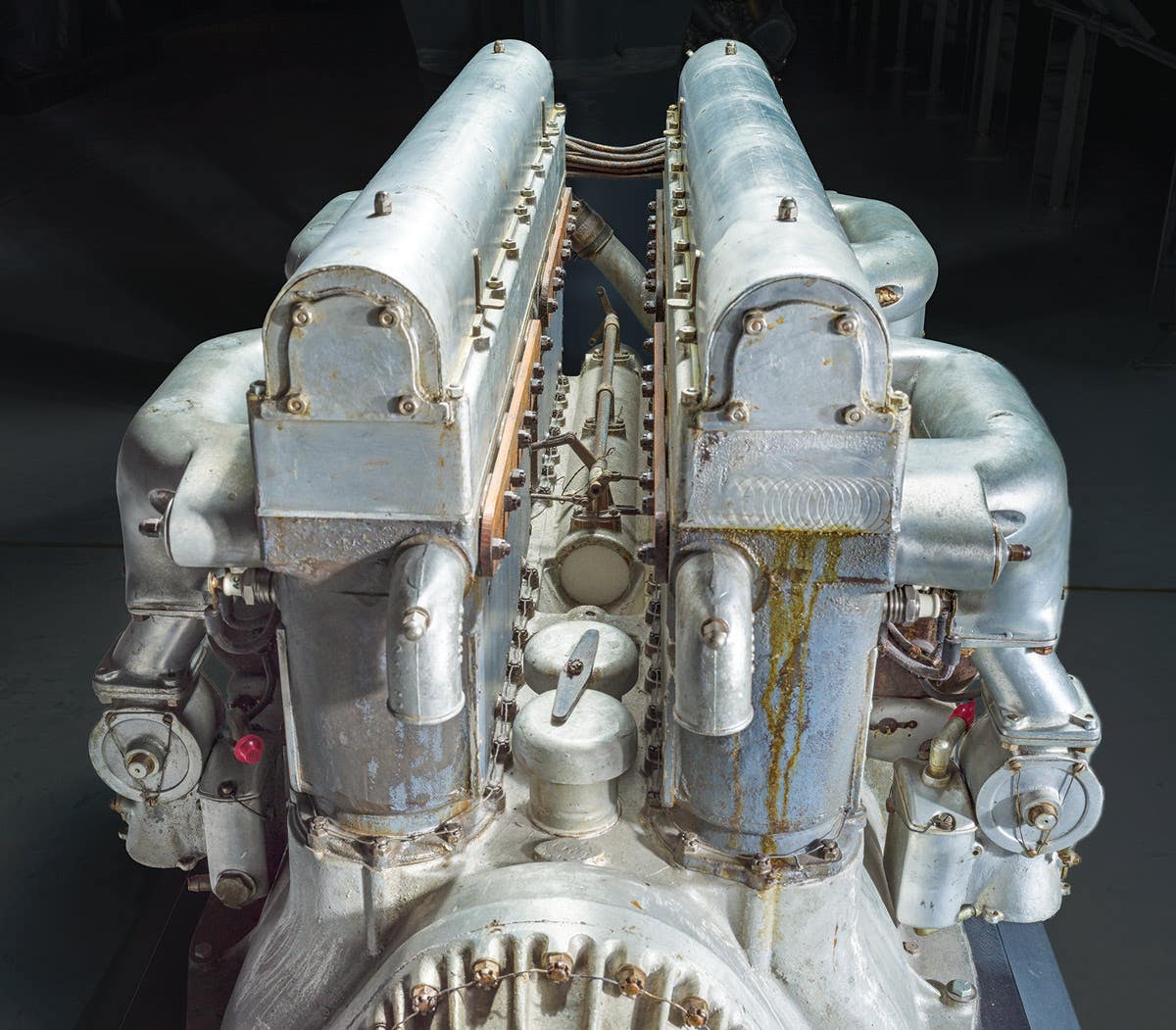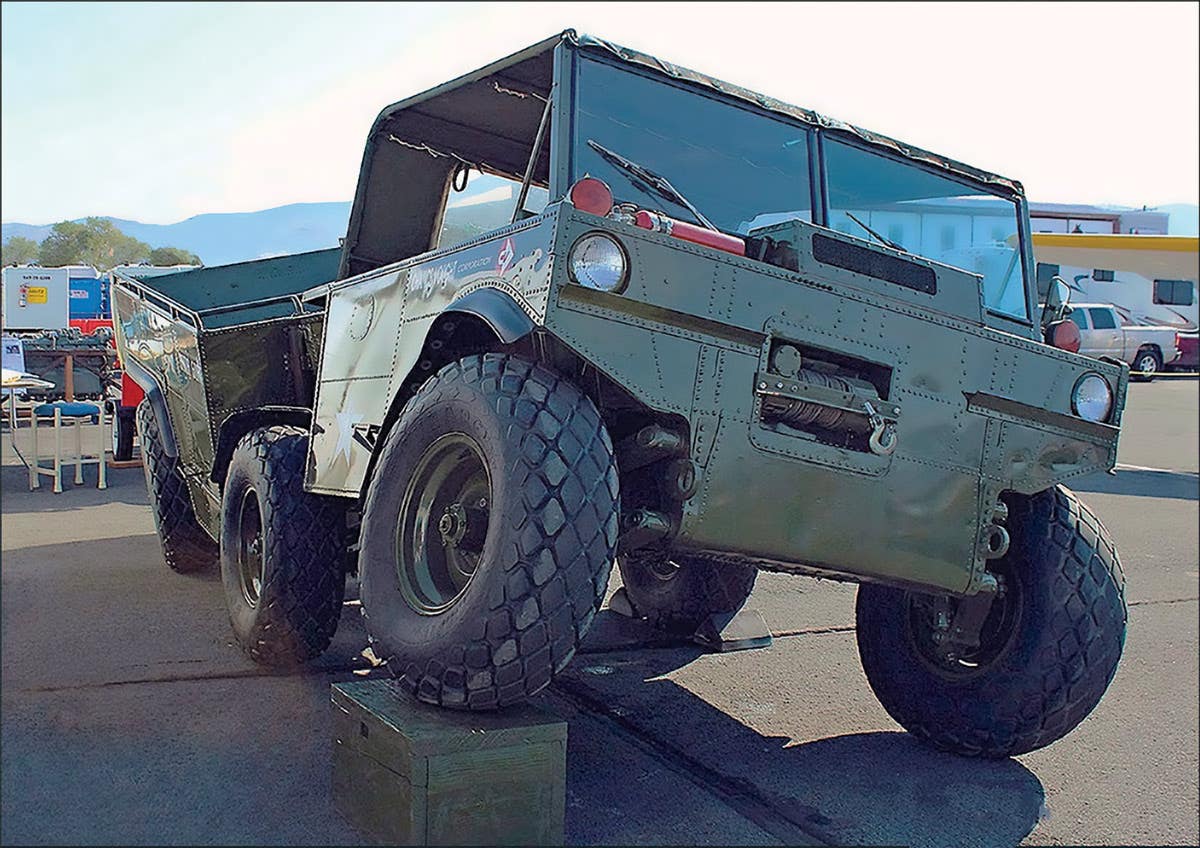Ploughshares into swords: International Harvester tactical trucks in WWII
International Harvester Corporation’s (IHC) contribution to the U.S. military’s arsenal during World War II consisted of vast and varied quantities of items ranging from tractors to torpedoes and even ice chests.
decades of experience building assembled trucks — meaning vehicles custom-assembled from other manufacturer’s components —
this was IHC’s first full-scale production of all-wheel-drive vehicles. Steve Turchet
International Harvester Corporation’s (IHC) contribution to the U.S. military’s arsenal during World War II consisted of vast and varied quantities of items ranging from tractors to torpedoes and even ice chests. IHC also supplied large numbers of vehicles, including ambulances, halftracks, prime movers, fire engines, civilian type and tactical cargo trucks. In regard to the latter, and while IHC already had decades of experience building assembled trucks — meaning vehicles custom-assembled from other manufacturer’s components — this was IHC’s first full-scale production of all-wheel- drive vehicles.
While adding all-wheel-drive components — primarily a powered front steering axle and a transfer case — to a truck didn’t require much engineering, IHC had heretofore never seen any reason to build its own. There was no great demand for such vehicles in the civilian market, and the relatively few being ordered were already supplied by companies such as FWD, Oshkosh, Walter, Duplex, and Coleman, while Marmon-Herrington did many conversions. All of these companies were well established in their respective niches, and IHC saw no financial advantage in competing with them. However, the onset of World War II resulted in a mammoth demand for all-wheel-drive vehicles, and especially for smaller trucks of 1½-ton and under load capacities.
suspension and powered by the IHC 361-cid Red Diamond engine. Most late- production M-5-6 cargo trucks were open cabs, though those going to
Lend-Lease, primarily to the U.S.S.R., were closed. Steve Turchet
So, contracts were made, designs were drawn up and production commenced. In addition to the many other war materials manufactured by IHC, tactical truck production from smallest to largest consisted mainly of the M-1-4 4x4 half-ton truck, the M-4-2 4x4 1-ton truck, the M-4-3 4x4 1½-ton truck, the M-5-6 6x6 2½-ton truck, and the H-542-11 4x2 5-ton truck-tractor.
Built primarily for the U.S. Marine Corps, which seemed to disdain frills such as cabs or even body tubs —- or perhaps wanting to provide fast egress for the driver should the vehicle come under enemy fire — the M-1-4, when viewed from the side, looked like a stripped-down something a farm-boy might make. While this truck’s front and rear views were impressive, there’s little argument that it was whacked with an ugly stick amidships.
Approximately 1,123 of these trucks were manufactured. They were powered by the IHC Green Diamond 6-cylinder 214-cid L-head engine, which was rated at 80 horsepower at 1500 rpm, four-speed non-synchromesh transmissions, 6-volt electrical systems, and two-speed transfer cases. The transfer case is interesting because the half-ton Dodges of this period had only single-speed transfer cases. The M-1-4 was fitted with 7.50x16 tires, and for the Marines was the next best thing to the Willys MB and Ford GPW jeeps, even though much larger and far less nimble. About 900 ambulance models were also built on this chassis using the same type of collapsible or “knock-down” bodies as the Dodge WC-64-K.
A note on the Green Diamond engine: it was originally a Willys design of 175 cid, which Willys sold to IHC in the 1930s. This engine remained in production for IHC light trucks into the late 1940s in a 233-cid configuration.
built for the Navy, and some later production models were fitted with 12-volt electrical systems. Some ambulance-bodied models were also built on this chassis.
Many were field-fitted with dual rear wheels for obvious reasons, as shown in this photo. Steve Turchet
vehicle and most of them were going to the Army, with only the Ford GTB “Burma Jeep” going to the Navy and Marines. IHC supplied
approximately 36,320 M-3-4 1 1/2-ton trucks to the Navy and Marines. Steve Turchet
Except for possible prototypes, IHC didn’t build any ¾-ton tactical trucks during the war, since Dodge had that category covered with their WC-51 and WC-52, so IHC’s next larger model was the 1 ton M-2-4. These trucks had the same engines and transmission/transfer components as the half-tonners, but used heavier suspensions and axles and were fitted with 9.00x16 tires. The 1-tons were just as stripped-down looking as the half- tons when viewed in profile. Approximately 10,450 of these were built, with most of them going to the Marines and used in the Pacific. Some closed-cab models were built for the Navy, and some later production models were fitted with twelve-volt electrical systems. Some ambulance-bodied models were also built on this chassis.
Next up the IHC size scale was the 1½-ton M-3-4. While this size truck was already being supplied as the Chevrolet G-506 and Dodge WC-63, it was also one the most useful sizes of vehicle and most of them were going to the Army, with only the Ford GTB “Burma Jeep” going to the Navy and Marines. The M-3-4 was the best-looking and performing member of IHC’s wartime tactical 4x4s. Approximately 36,320 of these were built for the Navy and Marine Corps. Powered by the IHC Blue Diamond OHV 6-cylinder engine with a 269-cid compared to Chevy’s 235, Dodge’s 230, or Ford’s 226, it was the most powerful of the wartime tactical 1½-ton 4x4 trucks. It was also the only truck of that size range to feature a five-speed overdrive transmission. The transfer case was a two-speed, and the vehicle was equipped with 7.50x20 tires. In addition to the cargo models, several other bodies were fitted to this chassis, including dumps, wreckers, crash and fire trucks, tankers, and an airfield lighting vehicle. These trucks were equipped with 6- or 12-volt electrical systems, with the later production models presumably getting the 12-volt system.
and were fitted with 9.00x16 tires. Approximately 10,450 of these were built, with most of them going to the Marines and used in the Pacific. Some closed-cab
models were built for the Navy, and some later production models were fitted Steve Turchet
Farther up the size scale was the 2½-ton 6x6 M-5-6. Far less common than the famous GMC CCKW 2½-ton 6x6 and its variants (500,000) and the Studebaker US-6 2½-ton 6x6 and variants (200,000), only about 4,460 IHC M-5-6s and variants were built. Yet, mechanically and performance-wise, they were the best of the WWII 2½-ton tactical trucks. Powered by the IHC Red Diamond engine, they had 361 cid compared to the GMC’s 270 and the Studebaker’s 320. The US-6’s engine was actually a Hercules JXD industrial engine that only put out 86 net horsepower at 2600 rpm, while the GMC engine was rated at 94 net hp at 3000 RPM. By comparison, the IHC engine was rated at 126 hp at 2800 RPM.
The M-5-6 also had the heaviest axles and suspension, using a Henrickson rear bogie. The M-5-6 was fitted with a five-speed overdrive transmission and a two-speed transfer case. Like the GMC and Studebaker trucks, brakes were hydrovac; and 7.50x20 tires were fitted. As with the GMC CCKW, most late production cargo trucks were open-cabs, though those going to Lend-Lease, primarily to the U.S.S.R., were closed. Other bodies mounted on the M-5-6 chassis were crash, fire, fuel or water tanker, shop, and wrecker. There was also a truck-tractor.
egress for the driver should the vehicle come under enemy fire — the M-1-4 and M-2-4 cargo trucks, when viewed from the side, looked like
stripped-down somethings a farm boy might make. Steve Turchet
After the war, the M-5-6 was probably the most desirable of the 2½-ton surplus military trucks for civilian use. A local concrete company near the author’s home in California had a fleet of M-5-6 trucks retrofitted as mixers and ran them up through the late 1960s. Even today one may still find an M-5-6 doing duty for a house-moving or tree-service company, or serving as a water truck.
The largest of IHC’s wartime tactical trucks was the H-542-11 5-ton 4x2 truck-tractor, designated by the U.S. military as the M425 and M426, which were cab-over-engine designs fitted with IHC Red Diamond engines and many of the other components used by the M-5-6, though the H-542-11’s 5-speed transmission had a very low first gear and top gear was direct instead of overdrive, while the brake system was full air instead of hydrovac. The M425 had 9.00x20 tires while M426 had 11.00x20. Later during the war, many M425s were upgraded with 11.00x20 tires. Approximately 5,290 of these truck-tractors were built by IHC, with many going to Lend-Lease.
Ploughshares into swords indeed!
